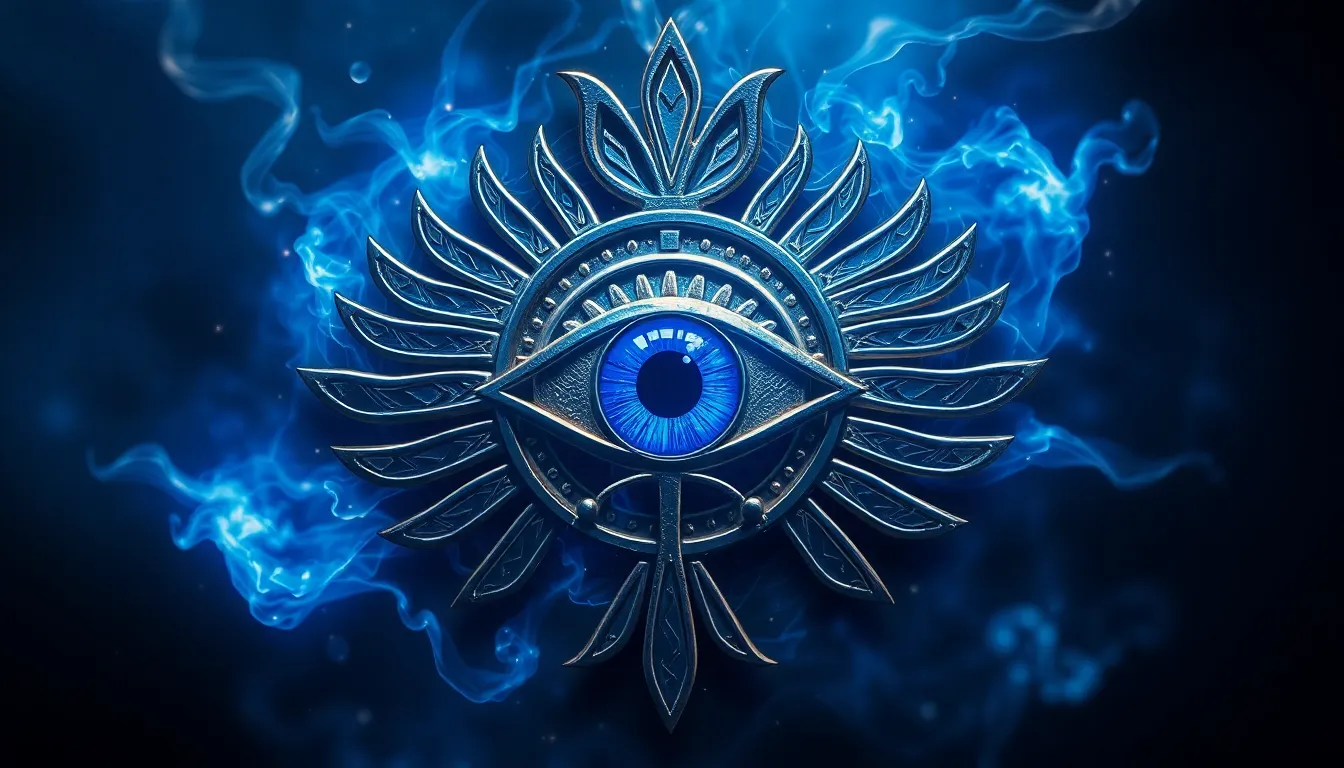The Power of the Eye of Horus: Protection and Healing
Introduction to the Eye of Horus
The Eye of Horus, also known as the Wedjat, is one of the most recognizable symbols from ancient Egyptian mythology. Its origins can be traced back over 5,000 years, deeply embedded in the culture and religion of ancient Egypt. The symbol itself represents protection, royal power, and good health, embodying the essence of Horus, the falcon-headed god.
In ancient Egyptian culture, the Eye of Horus was not only a powerful symbol but also a key element in their beliefs regarding the afterlife and healing. It was seen as a protective emblem that safeguarded individuals from harm, both in life and after death. As such, the Eye of Horus holds a significant place in the pantheon of Egyptian mythology, revered for its capacity to offer protection and promote healing.
Mythological Background
The story of Horus is one of rivalry and triumph. Horus, the son of Osiris and Isis, battled Set, the god of chaos, who had murdered Osiris. This epic conflict between order and chaos culminated in Horus’s eventual victory, symbolizing the restoration of balance and justice. During this struggle, Horus lost his left eye, which was later restored by the god Thoth, symbolizing healing and wholeness.
The Eye of Horus thus came to represent not only Horus’s vision and power but also his ability to overcome adversity. It became a symbol of protection, often interpreted as a talisman that could ward off evil and safeguard individuals from harm.
Symbolism of the Eye of Horus
The Eye of Horus is made up of several components, each carrying its own significance:
- The pupil: Represents the ability to see and perceive.
- The eyebrow: Symbolizes protection and divine intervention.
- The tear markings: Associated with Horus’s grief over his father’s death, representing healing and empathy.
- The outer markings: Often interpreted as a representation of the sun and moon, embodying the balance of day and night.
This symbolism aligns the Eye of Horus with concepts of health, safety, and well-being. It is commonly associated with both the sun (Ra) and the moon (Thoth), emphasizing its dual nature of illumination and intuition.
The Eye of Horus in Ancient Egyptian Practices
The Eye of Horus played a crucial role in ancient Egyptian funerary rituals. It was believed to protect the deceased on their journey to the afterlife. Amulets and artifacts featuring the Eye of Horus were commonly placed within tombs, serving as powerful protective symbols against malevolent forces.
Various rituals and prayers invoked the Eye, asking for healing and protection. Some common practices included:
- Placing Eye of Horus amulets on the deceased for safe passage.
- Reciting prayers that called upon Horus for protection.
- Using symbols of the Eye in healing rituals to ward off illness.
Modern Interpretations and Uses
In contemporary spirituality, the Eye of Horus has found new life as a symbol of protection and healing. It is frequently used in alternative healing practices, meditation, and visualization techniques. Many people now wear jewelry featuring the Eye of Horus as a protective talisman, believing it shields them from negative energies.
The symbol has gained popularity in fashion as well, representing not just personal style but also a deeper connection to ancient wisdom and protection.
Scientific Perspectives on Symbolism and Belief
From a psychological standpoint, protective symbols like the Eye of Horus can offer emotional and mental benefits. They can serve as reminders of safety and security, helping individuals cope with anxiety and fear. The placebo effect also plays a role, where belief in the symbol’s power can lead to real changes in perception and well-being.
Various cultures have adopted similar protective symbols, showing the universal need for assurance and safety. This cultural significance highlights the adaptability of such symbols in modern contexts.
Case Studies: Healing and Protection Through the Eye of Horus
Numerous personal testimonies illustrate the impact of the Eye of Horus as a symbol of healing and protection. Individuals report feeling a sense of security when wearing or displaying the symbol, often attributing positive changes in their lives to its presence.
Anecdotal evidence suggests that people have experienced:
- Improved mental clarity and focus.
- Enhanced emotional stability and resilience.
- Physical healing and recovery from illness.
This phenomenon can be compared to other protective symbols across cultures, such as the hamsa in Middle Eastern traditions or the Nazar in Mediterranean cultures, all serving similar purposes in providing comfort and security.
Conclusion: The Enduring Legacy of the Eye of Horus
The Eye of Horus remains a powerful symbol with deep historical roots and modern relevance. Its significance as a protector and healer endures, reminding us of the ancient beliefs that continue to resonate today. The Eye represents a connection to our past while providing a sense of security and wellness in contemporary life.
As we explore our personal connections to the Eye of Horus, we can tap into its ancient wisdom and harness its protective and healing powers in our lives.




